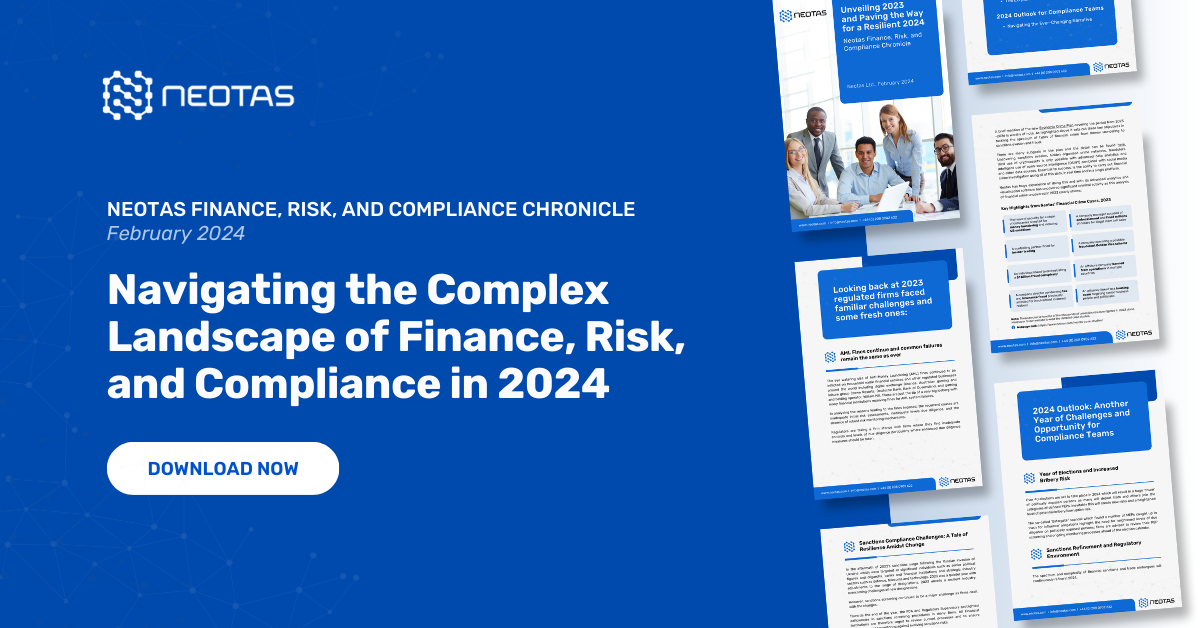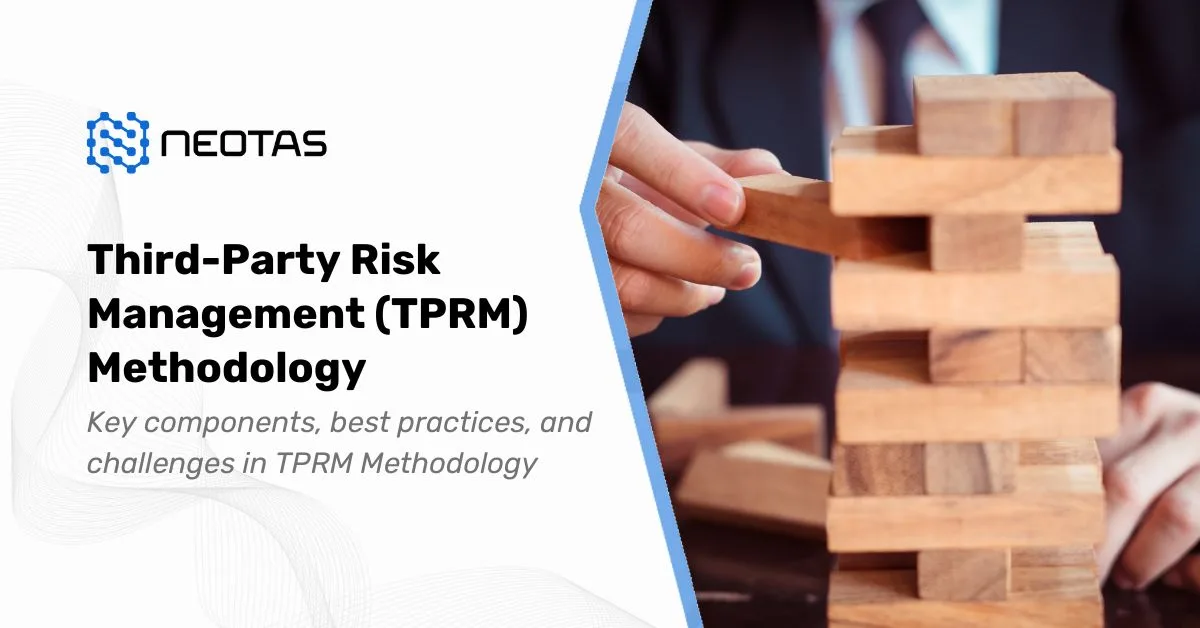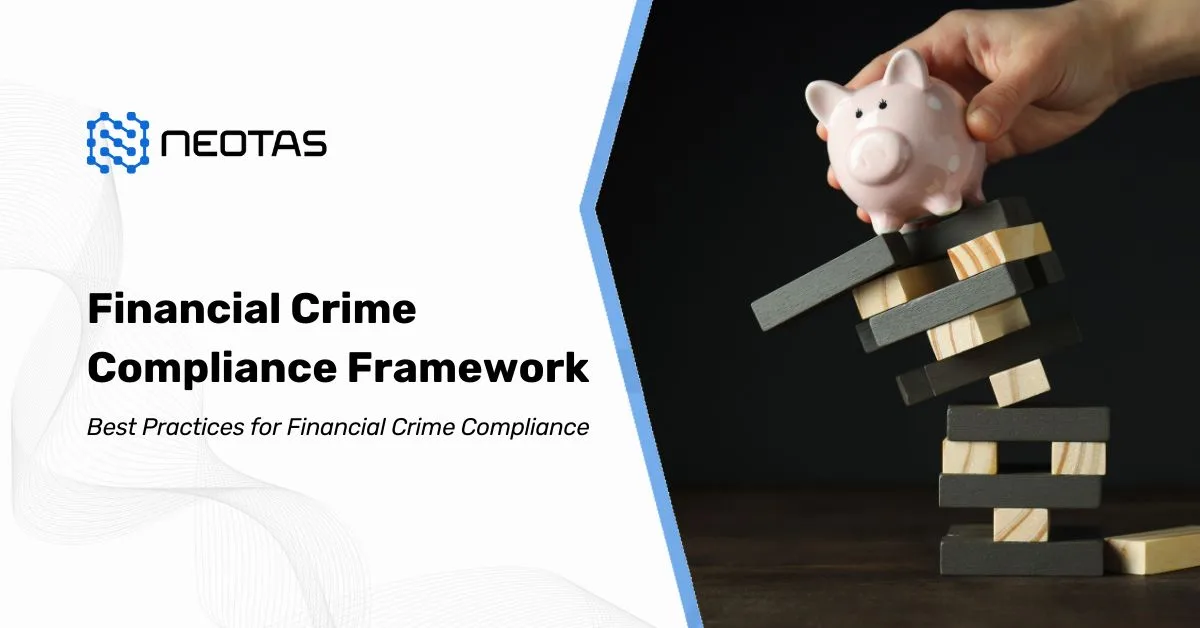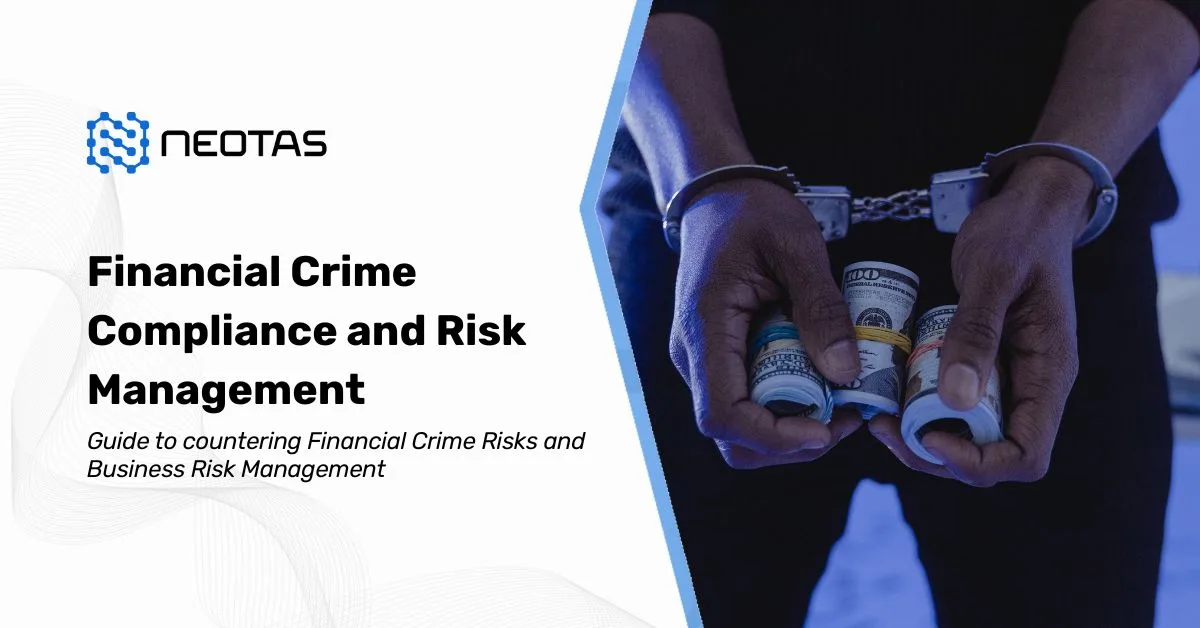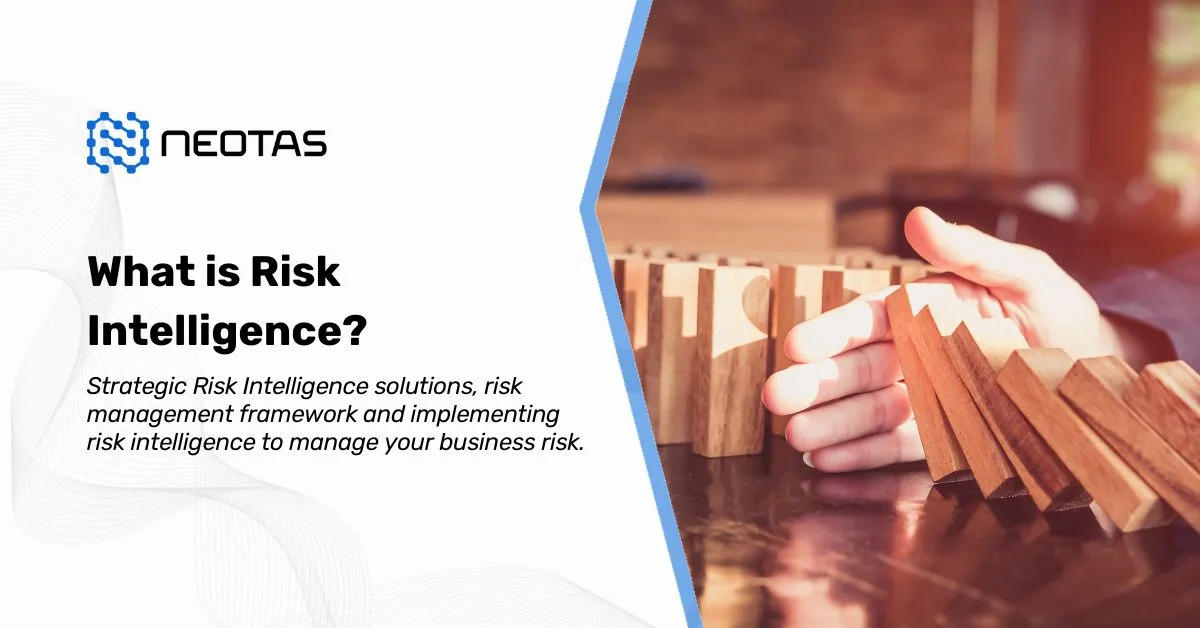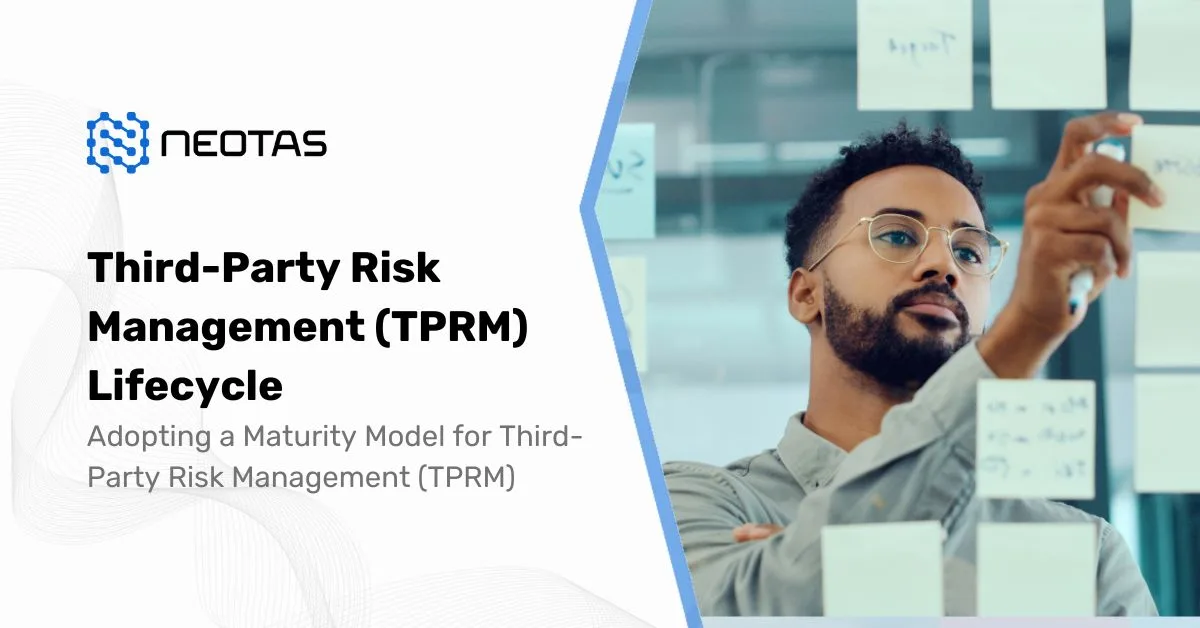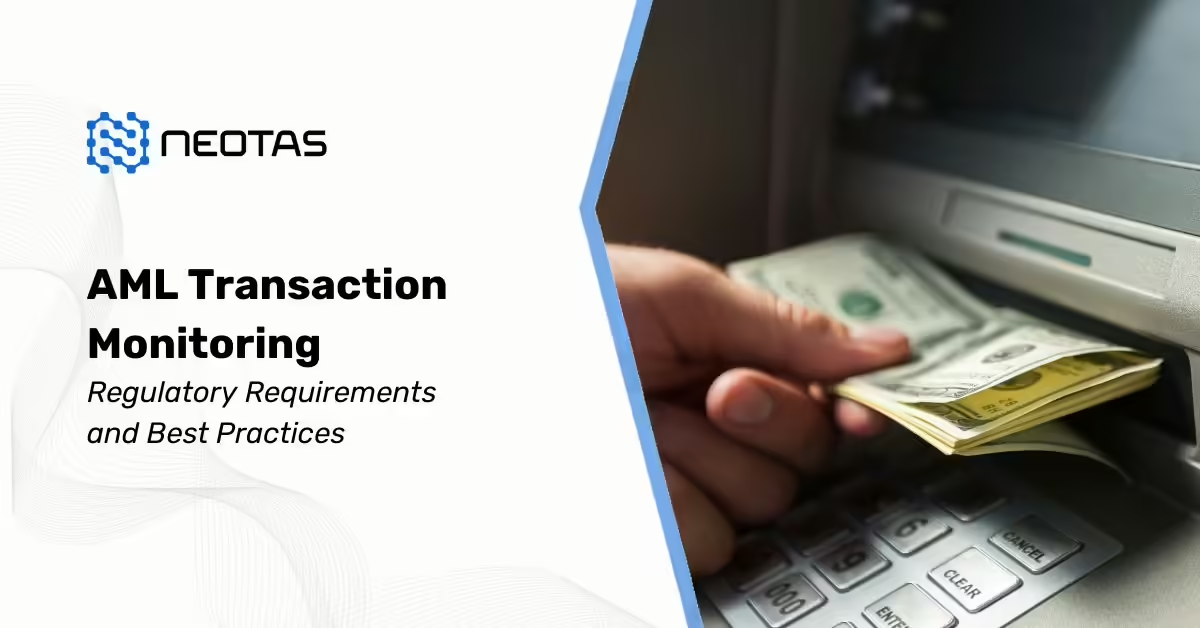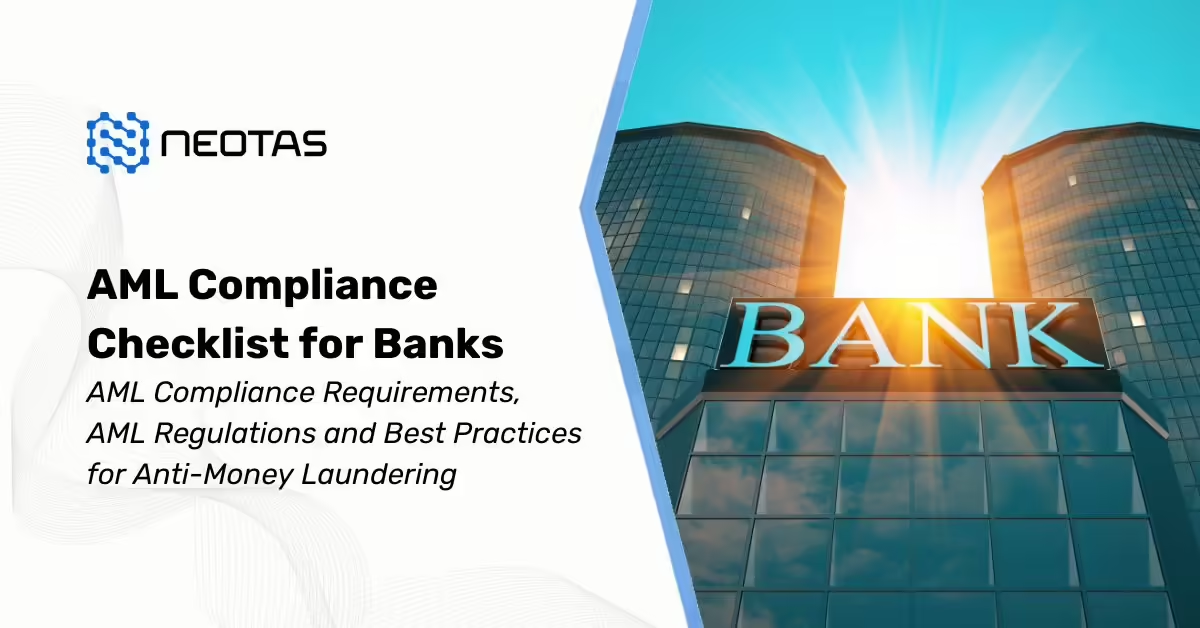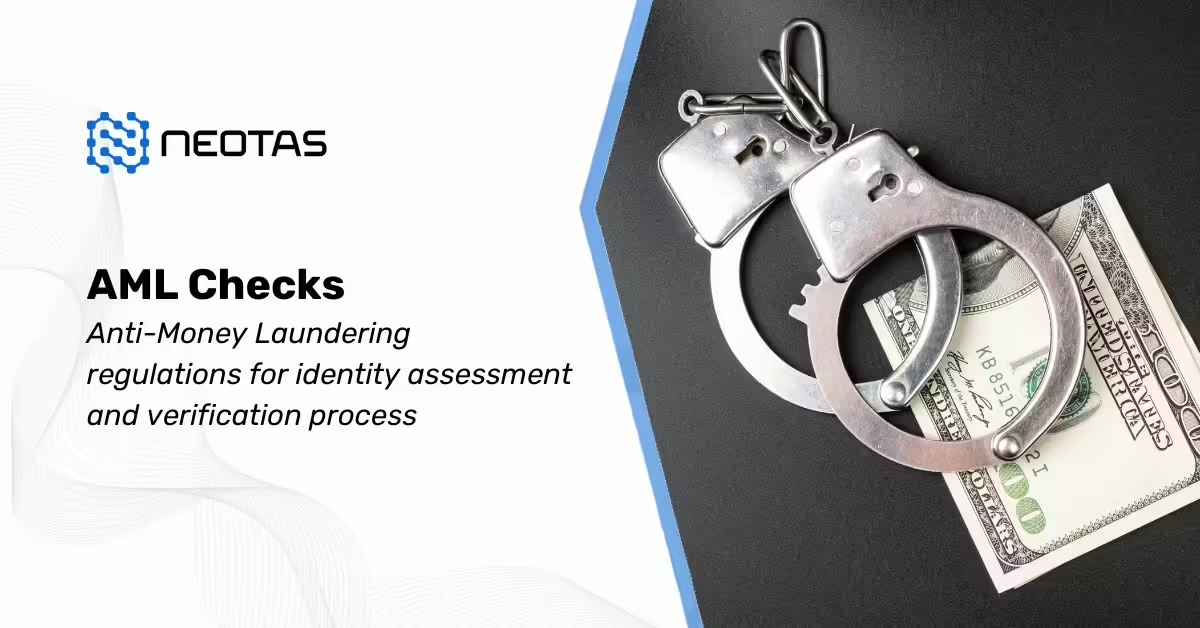AML Transaction Monitoring
Anti-Money Laundering (AML) transaction monitoring involves the continuous review of financial transactions conducted by customers to identify suspicious activities that could indicate money laundering, terrorist financing, or other illicit financial activities. By scrutinising transactions such as deposits, withdrawals, and transfers, financial institutions can detect patterns and anomalies that warrant further investigation.
Transaction monitoring systems (TMS) are designed to flag unusual behaviour by applying predefined rules and algorithms to large volumes of data. These systems help institutions comply with regulatory requirements and maintain the integrity of the financial system. In essence, transaction monitoring serves as both a preventative and investigative tool, enabling institutions to act on potential threats before they escalate.
Objectives of the Guide
This guide aims to provide a comprehensive understanding of AML transaction monitoring for 2024. Its objectives are to:
- Clarify Key Concepts: Explain the fundamental aspects of transaction monitoring, including its purpose and processes.
- Explore Regulatory Requirements: Detail the regulatory landscape governing transaction monitoring and highlight the importance of compliance.
- Guide Implementation: Offer practical advice on setting up and maintaining an effective transaction monitoring system, including the use of automation and AI.
- Analyse Impact: Discuss the implications of transaction monitoring on operational efficiency and financial performance.
- Provide Advanced Insights: Deliver advanced knowledge on enhancing transaction monitoring systems and managing complex cases.
What is AML Transaction Monitoring?
Transaction monitoring is a critical component of Anti-Money Laundering (AML) efforts that involves the systematic review and analysis of financial transactions to identify and mitigate risks associated with money laundering, terrorist financing, and other financial crimes. This process is designed to detect suspicious activities and patterns that may indicate illegal behaviour or regulatory non-compliance.
At its core, transaction monitoring involves scrutinising a wide range of financial transactions—such as deposits, withdrawals, transfers, and payments—against established criteria and rules. These criteria are developed based on regulatory requirements, industry standards, and the specific risk profile of the institution. The goal is to identify transactions that deviate from expected norms or exhibit unusual characteristics that warrant further investigation.
Here’s a detailed breakdown of the transaction monitoring process:
- Data Collection: Financial institutions gather comprehensive data from all transactions carried out by their customers. This includes transactional details, customer profiles, and account activity.
- Rule-Based Screening: The collected data is analysed using a set of predefined rules and algorithms designed to flag transactions that deviate from normal behaviour. These rules are based on historical data, regulatory requirements, and risk assessments.
- Anomaly Detection: Transactions that trigger the predefined rules are flagged as potentially suspicious. Anomalies may include unusually large transactions, rapid movement of funds, or transactions involving high-risk jurisdictions.
- Investigation: Flagged transactions are reviewed by compliance teams who assess whether the transactions are genuinely suspicious or false positives. This may involve deeper analysis, reviewing customer records, and gathering additional information.
- Reporting: If a transaction is deemed suspicious and potentially indicative of financial crime, a Suspicious Activity Report (SAR) or Suspicious Transaction Report (STR) is filed with the relevant authorities. This report provides details on the suspicious activity and is used to inform further investigations by law enforcement.
- Continuous Improvement: Transaction monitoring systems are continually updated and refined based on new threats, regulatory changes, and lessons learned from past cases. This includes adjusting rules, incorporating advanced technologies like artificial intelligence, and enhancing data analytics capabilities.
Effective transaction monitoring is essential for compliance with AML regulations, safeguarding financial institutions from being used for illegal activities, and contributing to the broader fight against financial crime. It combines technology and human expertise to ensure that suspicious activities are identified and addressed promptly, thereby protecting the integrity of the financial system.
Who Needs AML Transaction Monitoring?
Transaction monitoring is a fundamental requirement for various sectors involved in financial transactions and high-value activities. These include:
Financial Institutions
Financial institutions, including banks and credit unions, are primary entities required to implement robust transaction monitoring systems. Given their central role in handling large volumes of transactions and maintaining customer accounts, they are at a high risk of being exploited for money laundering and other financial crimes. Compliance with AML regulations is mandatory to ensure these institutions can detect and prevent illicit activities effectively. This includes monitoring transactions for unusual patterns, suspicious amounts, and anomalous behaviours that deviate from standard financial practices.
Non-Banking Financial Companies (NBFCs)
NBFCs, which provide financial services such as loans, insurance, and investment products but do not hold banking licences, are also required to implement transaction monitoring. These entities often deal with significant sums of money and financial transactions that can be susceptible to misuse. Effective transaction monitoring helps NBFCs mitigate risks related to money laundering and maintain regulatory compliance.
Real Estate and High-Value Dealers
The real estate sector and high-value dealers, including those involved in the sale of luxury goods, are critical areas where transaction monitoring is essential. Transactions in these sectors often involve substantial amounts of money and can be used to obscure the origins of illicit funds. Monitoring activities in real estate and high-value transactions ensures that these sectors are not used to facilitate money laundering or financial crime.
Other Regulated Entities
Various other regulated entities, such as gambling operators and cryptocurrency exchanges, are also subject to AML transaction monitoring requirements. These industries handle large transactions and often face unique risks related to financial crime. Implementing effective transaction monitoring helps these entities to detect and report suspicious activities, thereby fulfilling their regulatory obligations and safeguarding their operations.
Importance of AML Transaction Monitoring
Assisting the Economy in Battling Shared Threats
Transaction monitoring plays a crucial role in protecting the broader economy from financial crime. By identifying and reporting suspicious activities, institutions contribute to the fight against organised crime and terrorism financing. This collaborative effort helps safeguard the integrity of the financial system and supports economic stability. Effective monitoring systems can prevent the misuse of financial services for criminal purposes, thereby preserving public trust and confidence in financial institutions.
Compliance with Legal Requirements and Avoiding Fines
One of the primary reasons for implementing transaction monitoring is to ensure compliance with AML regulations. Regulatory bodies across jurisdictions mandate transaction monitoring as a critical component of AML compliance. Failure to adhere to these regulations can result in severe penalties, including fines, sanctions, and reputational damage. Maintaining robust transaction monitoring systems helps institutions to avoid such consequences and demonstrates their commitment to adhering to legal and regulatory requirements.
Anti-Fraud and Financial Integrity
Transaction monitoring is also vital for maintaining the integrity of financial operations and combating fraud. By continuously analysing transaction data for anomalies and suspicious patterns, institutions can detect fraudulent activities and prevent financial losses. This proactive approach to fraud prevention not only protects the institution’s assets but also enhances overall financial security. Effective monitoring helps institutions to manage risk, reduce financial losses, and maintain a reputation for integrity and reliability.
AML Transaction Monitoring Process and Regulatory Requirements
Batch vs. Real-Time Monitoring
Batch Monitoring
Batch monitoring involves collecting and analysing transaction data at specific intervals, typically at the end of each day or week. This method aggregates transactions over a defined period and processes them in bulk. While this approach is cost-effective and manageable for institutions with lower transaction volumes, it may not be suitable for detecting real-time anomalies or preventing immediate risks. The primary advantage of batch monitoring is its ability to handle large volumes of data without overwhelming the system. However, it can result in delays in identifying suspicious activities, which may allow illicit transactions to go unnoticed until the batch is reviewed.
Real-Time Monitoring
Real-time monitoring, on the other hand, analyses transactions as they occur. This method provides immediate detection of suspicious activities, allowing for prompt intervention and prevention of potential financial crimes. Real-time monitoring systems are often equipped with advanced technologies and algorithms that can process and assess transactions instantly. While more resource-intensive and complex to implement, real-time monitoring significantly enhances an institution’s ability to respond to threats quickly and reduces the risk of fraudulent activities slipping through the cracks.
Utilizing AI to Enhance Rule-Based Systems
Artificial Intelligence (AI) and machine learning technologies are increasingly being integrated into transaction monitoring systems to enhance the effectiveness of rule-based approaches. Traditional rule-based systems rely on predefined criteria to identify suspicious transactions, but they can be limited by their inability to adapt to new and evolving patterns of financial crime. AI enhances these systems by:
- Pattern Recognition: AI algorithms can analyse vast amounts of transaction data to identify complex patterns and anomalies that may not be captured by traditional rules.
- Adaptive Learning: Machine learning models can continuously learn from new data, improving their ability to detect emerging threats and reducing the reliance on static rules.
- False Positive Reduction: AI can help refine rules and reduce false positives by distinguishing between genuine suspicious activities and benign anomalies.
By incorporating AI into transaction monitoring, institutions can improve detection rates, reduce operational costs, and enhance their overall AML efforts.
The Importance of Real-Time Monitoring and Custom Rules
Real-Time Monitoring
Real-time monitoring is crucial for immediate detection and response to suspicious activities. It enables institutions to:
- Prevent Financial Crime: By identifying and addressing suspicious transactions as they occur, institutions can prevent potential financial crimes before they cause significant harm.
- Enhance Compliance: Real-time monitoring helps institutions meet regulatory requirements by providing timely insights and allowing for quicker reporting of suspicious activities.
- Improve Customer Experience: Prompt transaction processing and security measures contribute to a better customer experience, reducing friction and increasing trust.
Custom Rules
Custom rules are tailored to an institution’s specific risk profile and transaction patterns. They are essential for:
- Addressing Unique Risks: Custom rules allow institutions to address their unique risk factors, such as geographic risks, customer types, and transaction behaviours.
- Enhancing Detection Accuracy: Customised rules improve the accuracy of detecting suspicious activities by aligning with the institution’s specific needs and operational context.
- Adapting to Changes: As financial crime tactics evolve, custom rules can be adjusted to reflect new threats and regulatory changes, ensuring ongoing effectiveness.
Key Regulatory Requirements and Guidelines for AML transaction monitoring
Regulatory requirements for AML transaction monitoring vary by jurisdiction but generally include:
- Risk-Based Approach: Institutions must adopt a risk-based approach to transaction monitoring, tailoring their systems and processes to the level of risk associated with different customers and transactions.
- Continuous Monitoring: Regulators mandate ongoing transaction monitoring to detect and report suspicious activities in a timely manner.
- Record-Keeping: Institutions are required to maintain detailed records of transactions and monitoring activities for a specified period, facilitating audits and investigations.
- Reporting Suspicious Activities: Institutions must promptly report suspicious transactions to relevant authorities, such as filing Suspicious Activity Reports (SARs) or Suspicious Transaction Reports (STRs).
- Compliance with Standards: Institutions must adhere to national and international AML standards and guidelines, such as those set by the Financial Action Task Force (FATF) and local regulatory bodies.
Setting Up AML Transaction Monitoring Process
Steps in Establishing an Effective AML Transaction Monitoring Process
- Define Objectives and Scope: Clearly outline the objectives of the transaction monitoring process, including compliance with regulatory requirements and detection of financial crime. Determine the scope based on the institution’s risk profile and transaction volume.
- Select and Implement Technology: Choose a transaction monitoring system that aligns with the institution’s needs, considering factors such as real-time capabilities, integration with existing systems, and the ability to incorporate AI and machine learning.
- Develop and Customise Rules: Create and customise monitoring rules based on the institution’s risk assessment and regulatory requirements. Ensure that the rules are adaptable to changing threats and operational contexts.
- Train Personnel: Provide comprehensive training for staff involved in transaction monitoring, including compliance officers, analysts, and IT personnel. Ensure they understand the system’s functionality and the importance of accurate and timely reporting.
- Test and Validate: Conduct thorough testing and validation of the transaction monitoring system to ensure its effectiveness and accuracy. Perform pilot runs and simulations to identify and address any issues before full-scale implementation.
- Monitor and Review: Continuously monitor the performance of the transaction monitoring system, reviewing its effectiveness and making necessary adjustments. Regularly assess the system against evolving regulatory requirements and emerging threats.
Conducting a Comprehensive Risk Assessment
- Identify Risk Factors: Assess factors such as customer profiles, transaction types, geographic locations, and business relationships to identify potential risks.
- Evaluate Existing Controls: Review existing AML controls and monitoring processes to determine their adequacy in addressing identified risks.
- Determine Risk Levels: Categorise risks based on their likelihood and impact, prioritising areas that require more stringent monitoring and controls.
- Develop Risk Mitigation Strategies: Implement strategies and measures to address identified risks, including enhancing transaction monitoring rules and improving internal controls.
Developing Policies and Procedures
- Establish Policies: Develop clear policies outlining the institution’s approach to transaction monitoring, including objectives, responsibilities, and procedures.
- Create Procedures: Define detailed procedures for transaction monitoring, including data collection, rule application, investigation, and reporting processes.
- Ensure Compliance: Ensure that policies and procedures align with regulatory requirements and industry best practices. Regularly update them to reflect changes in regulations and operational practices.
- Document and Communicate: Document all policies and procedures and communicate them to relevant personnel. Provide ongoing training to ensure adherence and understanding.
By following these steps, institutions can establish a robust and effective AML transaction monitoring process that meets regulatory requirements, addresses risks, and contributes to the overall integrity of the financial system.
Automated AML Transaction Monitoring
Transaction Monitoring Challenges
- Volume and Complexity: Financial institutions often deal with large volumes of transactions, which can be overwhelming for manual monitoring. The complexity of transactions, especially those involving multiple accounts, currencies, or jurisdictions, further exacerbates the challenge.
- False Positives: Traditional rule-based systems may generate a high number of false positives, leading to unnecessary investigations and increased operational costs. This can strain resources and affect the efficiency of the monitoring process.
- Dynamic Threats: Financial criminals continually adapt their tactics, making it challenging for static rules to keep up. Automated systems must be dynamic and adaptable to effectively identify evolving patterns of suspicious activity.
- Integration with Existing Systems: Integrating automated monitoring solutions with existing systems and processes can be complex. Ensuring seamless data flow and system compatibility is crucial for effective monitoring.
Automation for Handling Large Transaction Volumes
- Scalability: Automated transaction monitoring systems are designed to handle large volumes of transactions efficiently. They use algorithms and data processing capabilities to analyse transactions in real time or batch mode, depending on the institution’s needs.
- Data Processing Speed: Automation accelerates the processing of transactions, enabling institutions to quickly identify and address potential risks. This speed is essential for maintaining real-time or near-real-time monitoring capabilities.
- Resource Allocation: By automating routine tasks, institutions can allocate human resources to more complex investigations and strategic activities. This helps optimise operational efficiency and focus on high-value tasks.
- Advanced Analytics: Automation often includes advanced analytics and machine learning, which can detect subtle patterns and anomalies that might be missed by manual reviews. This enhances the accuracy of monitoring and reduces the likelihood of overlooking suspicious activities.
Internal Logic and Rules for Automated Monitoring
- Rule Configuration: Automated systems use a set of rules and algorithms to identify suspicious transactions. These rules can be customised based on the institution’s risk profile, regulatory requirements, and historical data.
- Dynamic Adjustments: To address the limitations of static rules, automated systems can incorporate adaptive algorithms that adjust in response to new threats and changing transaction patterns.
- Integration of AI: Incorporating AI into automated systems enhances rule-based monitoring by enabling the detection of complex and evolving patterns of suspicious behaviour. AI models can learn from historical data and adapt to emerging threats.
- Threshold Setting: Setting appropriate thresholds for triggering alerts is crucial. Too high a threshold may miss suspicious activities, while too low a threshold can lead to excessive false positives. Balancing these thresholds is key to effective monitoring.
The Impact of Transaction Monitoring on Revenue
Cost Implications
- Implementation Costs: Setting up a comprehensive transaction monitoring system involves significant initial investment. Costs include software acquisition, integration, and initial training.
- Operational Costs: Ongoing expenses include system maintenance, updates, and personnel training. Automated systems can reduce manual labour costs but may require investment in technology and support.
- Compliance Costs: Ensuring compliance with AML regulations can incur additional costs, including legal fees, regulatory fines for non-compliance, and expenses associated with reporting and audits.
- False Positives Management: High levels of false positives can lead to increased operational costs due to unnecessary investigations and resource allocation.
Efficiency and Operational Benefits
- Enhanced Detection Capabilities: Automated systems improve the accuracy and efficiency of detecting suspicious activities, reducing the risk of missed threats and regulatory fines.
- Faster Processing: Automation accelerates transaction processing, allowing for real-time monitoring and quicker responses to potential risks.
- Optimised Resource Allocation: By automating routine tasks, institutions can focus human resources on more complex investigations, improving overall operational efficiency.
- Improved Compliance: Effective transaction monitoring systems help institutions meet regulatory requirements, reducing the likelihood of fines and penalties.
Balancing Compliance and Business Goals
- Cost-Benefit Analysis: Institutions must balance the costs of implementing and maintaining a transaction monitoring system with the benefits of enhanced compliance and reduced risk. A well-chosen system should offer a positive return on investment.
- Regulatory Alignment: Ensure that the transaction monitoring system aligns with regulatory requirements while supporting business goals. This includes integrating compliance measures without compromising operational efficiency.
- Strategic Integration: Incorporate transaction monitoring into the broader business strategy, ensuring that it supports organisational objectives and enhances overall risk management.
- Continuous Improvement: Regularly review and update the monitoring system to address evolving threats and regulatory changes. This helps maintain a balance between effective compliance and achieving business goals.
Advanced Transaction Monitoring
Integrating AI and Machine Learning
Role of AI in Enhancing Monitoring Accuracy
- Pattern Recognition: AI and machine learning algorithms excel at recognising complex patterns and anomalies in transaction data that traditional rule-based systems might miss. By analysing vast amounts of data, AI can identify subtle, emerging patterns of suspicious behaviour, enhancing overall monitoring accuracy.
- Predictive Analytics: Machine learning models can predict potential risks by analysing historical data and identifying trends that precede suspicious activities. This proactive approach helps in early detection of potentially fraudulent or illegal transactions.
- Adaptive Learning: Unlike static rule-based systems, AI-powered solutions can adapt and evolve based on new data and emerging threats. This continuous learning process enables the system to improve its accuracy over time and respond effectively to changing tactics used by financial criminals.
- Reduced False Positives: AI can significantly reduce the number of false positives by learning from past data and refining its algorithms to distinguish between legitimate transactions and suspicious activities more accurately. This not only reduces the burden on compliance teams but also improves the efficiency of the monitoring process.
Custom Rules and Dynamic Segmentation
Designing Effective Monitoring Rules
- Rule Development: Designing effective monitoring rules involves understanding the specific risks associated with different transaction types and customer profiles. Rules should be based on historical data, regulatory requirements, and emerging threat patterns to ensure they are relevant and effective.
- Risk-Based Rules: Implement risk-based rules that adjust the threshold for alerts based on the customer’s risk profile. For instance, higher thresholds might be applied to low-risk customers, while lower thresholds are used for high-risk customers, ensuring that monitoring is proportional to the risk.
- Scenario-Based Rules: Develop scenario-based rules that mimic common money laundering schemes and fraud tactics. These scenarios should be regularly updated to reflect new threats and adapt to changes in financial crime tactics.
- Rule Testing and Validation: Continuously test and validate monitoring rules to ensure their effectiveness. This involves analysing the performance of existing rules, adjusting parameters as needed, and incorporating feedback from investigations to refine rule accuracy.
Adapting Rules to Customer Risk Profiles
- Customer Segmentation: Segment customers based on risk factors such as transaction volume, geographical location, and transaction types. Tailor monitoring rules to each segment to ensure that high-risk customers receive enhanced scrutiny, while low-risk customers are monitored appropriately.
- Dynamic Adjustments: Implement dynamic rule adjustments that respond to changes in a customer’s behaviour or risk profile. For example, if a previously low-risk customer starts conducting high-value transactions, the monitoring rules for that customer should be adjusted accordingly.
- Feedback Loop: Use insights from investigations and audits to refine and adapt monitoring rules. Feedback from real-world cases can help identify gaps in existing rules and inform adjustments to improve their effectiveness.
Real-Time Monitoring Best Practices
Implementing Effective Real-Time Systems
- Infrastructure Requirements: Ensure that your real-time monitoring system has the necessary infrastructure to handle high transaction volumes and process data quickly. This includes robust data processing capabilities and real-time analytics tools.
- Integration with Existing Systems: Integrate real-time monitoring systems with existing transactional and compliance systems to ensure seamless data flow and effective monitoring. This integration helps in providing a comprehensive view of customer activity and improving detection accuracy.
- Alert Management: Develop a system for managing real-time alerts efficiently. This includes setting up workflows for reviewing and investigating alerts, prioritising high-risk cases, and ensuring timely responses to suspicious activities.
Checklist: How to Choose a Transaction Monitoring Solution
Essential Features and Capabilities
- Comprehensive Data Integration:
- Ability to integrate with various data sources such as transaction records, customer databases, and external data feeds.
- Support for both structured and unstructured data.
- Real-Time Monitoring:
- Capabilities to analyse transactions in real time and generate immediate alerts for suspicious activities.
- Real-time processing and alerting to minimise delays.
- Advanced Analytics and AI:
- Integration of artificial intelligence and machine learning to enhance detection capabilities and reduce false positives.
- Predictive analytics for identifying emerging threats.
- Customisable Rules and Scenarios:
- Flexibility to design and adjust monitoring rules and scenarios based on organisational needs and regulatory requirements.
- Ability to adapt rules to different customer segments and risk profiles.
- Scalability:
- The solution should be scalable to handle increasing transaction volumes and growing data complexity.
- Support for scaling up or down based on business needs.
- User-Friendly Interface:
- Intuitive dashboard and reporting tools for ease of use by compliance teams.
- Customisable views and reports to suit different user roles.
- Compliance and Regulatory Reporting:
- Features to generate and file Suspicious Activity Reports (SARs) or Suspicious Transaction Reports (STRs) in accordance with regulatory requirements.
- Automated regulatory reporting and compliance tracking.
- Case Management and Investigation Tools:
- Integrated case management features to track and manage investigations of suspicious activities.
- Tools for documenting findings and maintaining audit trails.
- Audit and Monitoring:
- Comprehensive auditing capabilities to track system performance, user activity, and rule effectiveness.
- Regular updates and maintenance for continuous improvement.
- Support and Training:
- Access to vendor support and training resources for effective implementation and ongoing use.
- Availability of user guides, training sessions, and technical support.
Evaluation Criteria and Vendor Selection
- Vendor Reputation and Experience:
- Assess the vendor’s track record and expertise in AML transaction monitoring.
- Consider customer reviews, case studies, and references.
- Cost and Licensing:
- Evaluate the cost structure, including licensing fees, implementation costs, and ongoing maintenance.
- Compare pricing models and value for money.
- Integration Capabilities:
- Ensure compatibility with existing systems and infrastructure.
- Assess the ease of integration and data migration processes.
- Flexibility and Customisation:
- Determine the extent to which the solution can be customised to meet specific organisational needs.
- Evaluate the vendor’s willingness to adapt the solution based on feedback and changing requirements.
- Regulatory Compliance:
- Verify that the solution meets regulatory requirements specific to your region and industry.
- Ensure that the vendor stays up-to-date with changing regulations and compliance standards.
- Performance and Reliability:
- Test the solution’s performance under various scenarios and transaction volumes.
- Assess system reliability, uptime, and disaster recovery options.
- Customer Support and Service:
- Evaluate the level of customer support provided, including response times and availability.
- Consider the quality of training and support resources offered.
- Security and Data Protection:
- Ensure that the solution adheres to security best practices and data protection standards.
- Assess features such as encryption, access controls, and data privacy measures.
About Neotas Due Diligence
Neotas Platform covers 600Bn+ archived web pages, 1.8Bn+ court records, 198M+ corporate records, global social media platforms, and 40,000+ Media sources from over 100 countries to help you build a comprehensive picture of the team. It’s a world-first, searching beyond Google. Neotas’ diligence uncovers illicit activities, reducing financial and reputational risk.
AML Solutions:
- Risk-Based Approach (RBA) to AML & KYC risk management
- Anti-Money Laundering (AML) Compliance
- Anti-Money Laundering (AML) Checks
- Anti-Money Laundering (AML) Regulations
- Anti-Money Laundering (AML) Compliance Checklist
- Anti-Money Laundering (AML) Compliance Checklist for Banks
- Anti-Money Laundering (AML) Transaction Monitoring
- Money Laundering Reporting Officer (MLRO) – Roles and Responsibilities of an MLRO
- What is Customer Due Diligence in Banking and Financial Services?
Due Diligence Solutions:
- Enhanced Due Diligence
- Management Due Diligence
- Customer Due Diligence
- Simplified Due Diligence
- Third Party Risk Management
- Open Source Intelligence (OSINT)
- Customer Due Diligence Requirements
- Introducing the Neotas Enhanced Due Diligence Platform
Due Diligence Case Studies:
- Case Study: OSINT for EDD & AML Compliance
- Overcoming EDD Challenges on High Risk Customers
- Neotas Open Source Intelligence (OSINT) based AML Solution sees beneath the surface
- ESG Risks Uncovered In Investigation For Global Private Equity Firm
- Management Due Diligence Reveals Abusive CEO
- Ongoing Monitoring Protects Credit Against Subsidiary Threat
- AML Compliance and Fraud Detection – How to Spot a Money Launderer and Prevent It
- What is Customer Due Diligence in Banking and Financial Services?
FAQs on AML Transaction Monitoring
What are the key components of a transaction monitoring system?
The key components include real-time transaction analysis, rule-based detection, AI and machine learning algorithms, data integration, alert generation, and case management tools.
How can businesses reduce false positives?
Businesses can reduce false positives by refining monitoring rules, implementing machine learning algorithms, customising thresholds based on risk profiles, and regularly reviewing and updating detection scenarios.
What are the emerging trends in AML transaction monitoring?
Emerging trends include the integration of advanced AI and machine learning, increased use of real-time monitoring, dynamic rule adjustment, and greater focus on behavioural analytics and pattern recognition.
How does real-time monitoring improve AML compliance?
Real-time monitoring provides immediate detection of suspicious activities, allowing for quicker response and mitigation of potential risks, which enhances overall compliance with AML regulations.
What is the role of AI in transaction monitoring?
AI enhances transaction monitoring by identifying complex patterns, reducing false positives, adapting to new threats, and providing predictive insights based on historical data.
How can organisations ensure their transaction monitoring system remains effective?
Organisations can ensure effectiveness by regularly updating rules, incorporating feedback from investigations, leveraging advanced technologies, and staying informed about regulatory changes and emerging threats.
What challenges are associated with automated AML transaction monitoring?
Challenges include managing false positives, ensuring system accuracy, handling large volumes of data, and maintaining system performance and scalability.
How can businesses tailor transaction monitoring rules to different customer profiles?
Businesses can tailor rules by segmenting customers based on risk factors, adjusting thresholds based on transaction behaviour, and implementing dynamic rule adjustments for different risk profiles.
What are the benefits of integrating transaction monitoring with other compliance systems?
Integration improves data accuracy, streamlines workflows, enhances the ability to identify and respond to suspicious activities, and provides a unified view of compliance efforts.
How does transaction monitoring impact operational efficiency?
Effective transaction monitoring reduces manual review efforts, decreases the number of false positives, and improves overall efficiency by automating detection and reporting processes.
What factors should be considered when choosing a transaction monitoring solution?
Factors include the solution’s features and capabilities, vendor reputation, cost, integration compatibility, regulatory compliance, and support and training resources.
How often should transaction monitoring rules be reviewed and updated?
Rules should be reviewed regularly, at least annually, or whenever there are significant changes in regulatory requirements, business operations, or emerging threats.
What role does dynamic segmentation play in transaction monitoring?
Dynamic segmentation allows for more granular and effective monitoring by grouping customers based on specific risk characteristics and adapting rules based on their behaviour and risk profile.
How can businesses manage the cost of transaction monitoring systems?
Businesses can manage costs by selecting scalable solutions, negotiating pricing with vendors, optimising system configurations to reduce false positives, and leveraging automation to minimise manual review efforts.
What are the key considerations for implementing a real-time transaction monitoring system?
Key considerations include infrastructure requirements, integration with existing systems, alert management, performance testing, and the ability to handle high transaction volumes efficiently.

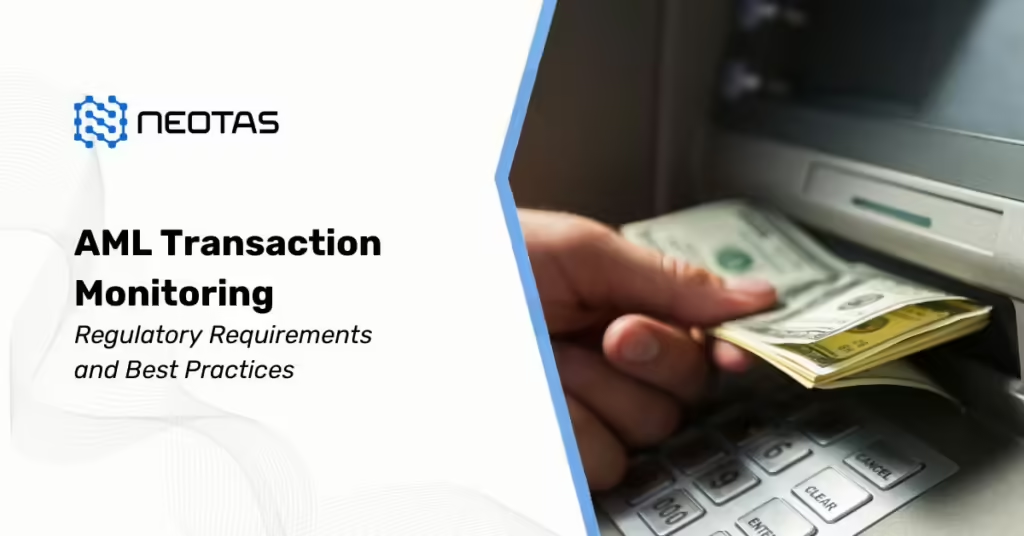

 Financial Crime Compliance Trends 2024
Financial Crime Compliance Trends 2024